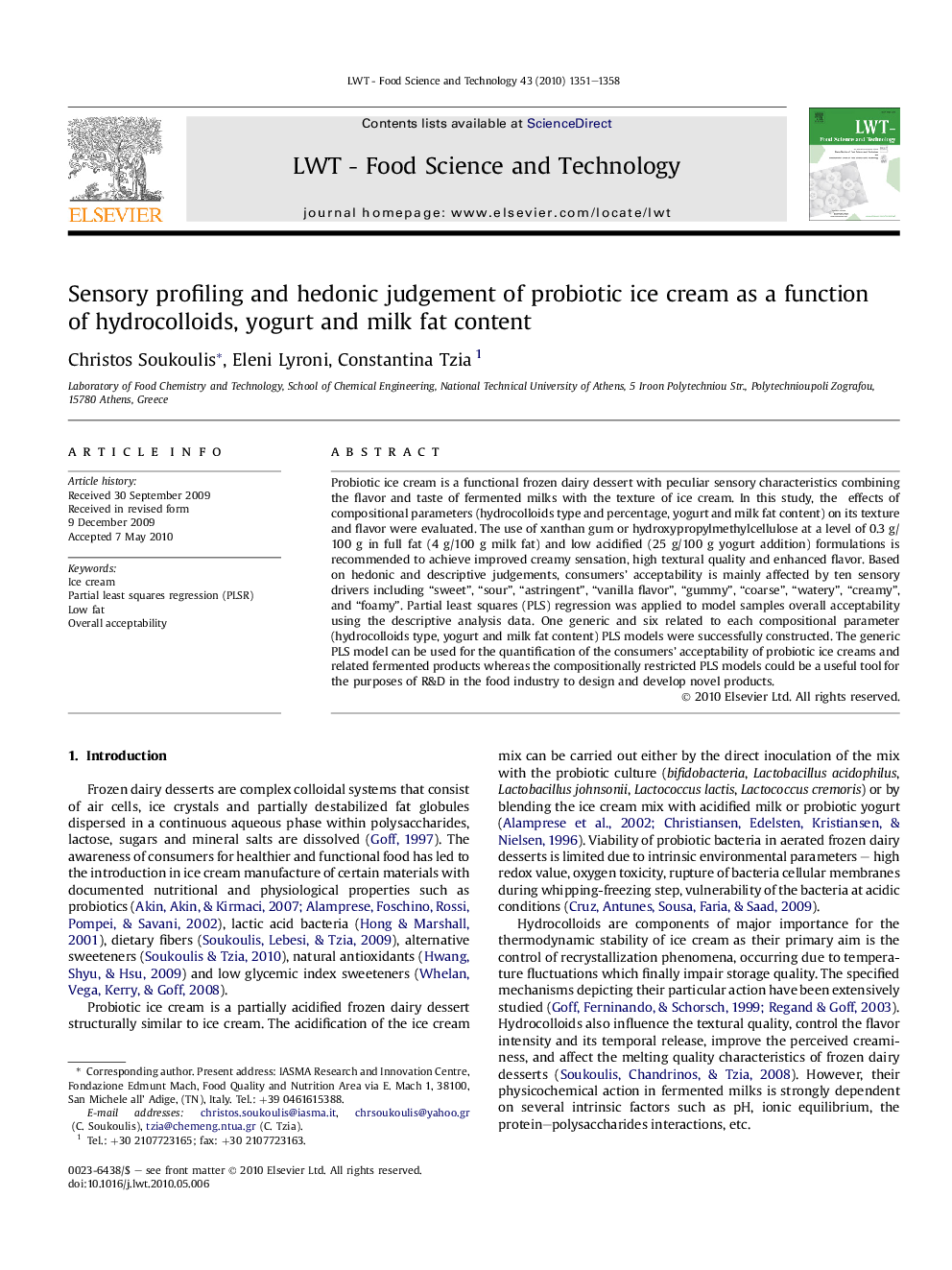| Article ID | Journal | Published Year | Pages | File Type |
|---|---|---|---|---|
| 4564162 | LWT - Food Science and Technology | 2010 | 8 Pages |
Probiotic ice cream is a functional frozen dairy dessert with peculiar sensory characteristics combining the flavor and taste of fermented milks with the texture of ice cream. In this study, the effects of compositional parameters (hydrocolloids type and percentage, yogurt and milk fat content) on its texture and flavor were evaluated. The use of xanthan gum or hydroxypropylmethylcellulose at a level of 0.3 g/100 g in full fat (4 g/100 g milk fat) and low acidified (25 g/100 g yogurt addition) formulations is recommended to achieve improved creamy sensation, high textural quality and enhanced flavor. Based on hedonic and descriptive judgements, consumers' acceptability is mainly affected by ten sensory drivers including “sweet”, “sour”, “astringent”, “vanilla flavor”, “gummy”, “coarse”, “watery”, “creamy”, and “foamy”. Partial least squares (PLS) regression was applied to model samples overall acceptability using the descriptive analysis data. One generic and six related to each compositional parameter (hydrocolloids type, yogurt and milk fat content) PLS models were successfully constructed. The generic PLS model can be used for the quantification of the consumers' acceptability of probiotic ice creams and related fermented products whereas the compositionally restricted PLS models could be a useful tool for the purposes of R&D in the food industry to design and develop novel products.
